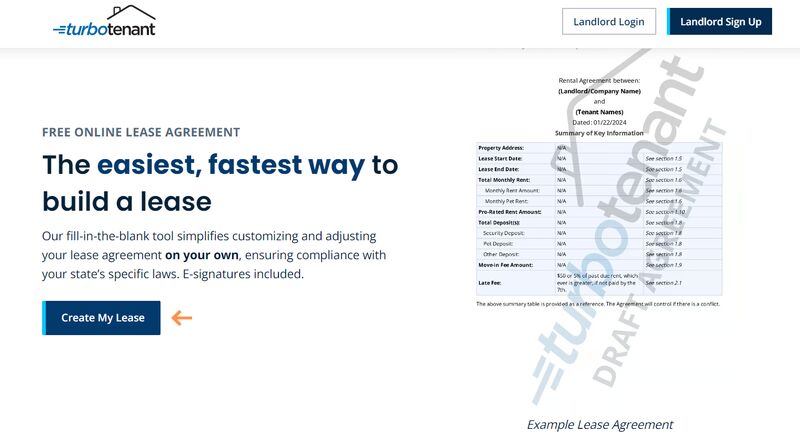A traditional 12-month lease comes to mind when people initially think of rentals. Conversely, a hotel or Airbnb is the primary choice when considering less lengthy stays, but it can be pricey if it’s more than a few nights. That’s why mid-term rentals have become an increasingly popular option for landlords to offer with their rental properties. I will take a look into mid-term rentals—what they are, who they are for, elements of a mid-term lease, and the advantages and disadvantages.
What Is a Mid-term Rental?
If you’ve never heard of mid-term rentals, also known as medium-term rentals, you’re not alone. Most landlords have either operated short- or long-term rentals in the past. Mid-term rentals are defined as a lease agreement that lasts more than one month and less than one year. This differs from other rentals, where short-term rentals typically last for less than a month and long-term rentals last for a year or more.

Furnished bedroom (Source: Pinterest)
Mid-term rentals are a great option for anyone needing temporary housing but for extended periods of time. These rentals are typically furnished apartments, condos, townhomes, or single-family homes. What sets this type of lease apart is its flexibility in terms of lease duration and the amenities it offers tenants, making mid-term rentals an attractive option for a diverse range of renters.
Differences in Rental Types
When deciding if a mid-term rental property model is right for you, consider the primary differences between rental types:
Short-term Rental | Mid-term Rental | Long-term Rental | |
|---|---|---|---|
Duration | Nightly or weekly; up to one month | One to six months | Six months to over one year |
Tenant Type | Travelers and tourists | Those needing temporary housing | Individuals and families |
Furnishings | Furnished | Furnished with limited decorating by the tenant | Unfurnished |
Rental Rate | Highest | Middle | Lowest |
Utilities | All included | Landlord’s choice (typically included) | Tenant paid |
Repairs and Maintenance | Landlord | Landlord’s choice (typically included) | Tenant |
Pros & Cons of Mid-term Rentals
Mid-term rentals provide flexibility in lease terms, which allows renters to choose a duration that aligns with their specific needs. Like any housing option, they come with their own set of advantages and disadvantages. Here are some points to consider:
Who Is a Mid-term Rental Best for?
Mid-term rentals cater to a wide range of individuals with vastly different lifestyles. These renters typically seek shorter-term solutions with customizable lease terms and convenient housing options. They want to be comfortable and feel like they are at home without having to commit to a long-term lease.
Transitioning Homeowners
Homeowners have many different reasons for needing transitional housing. It could be that they sold their current property and are waiting to move into their new home or they are looking for a month-to-month solution while they search for their next home. Others may have been displaced from their homes due to natural disasters, insurance claims, or major repairs needed on their current home.
No matter the reason for the transition, these tenants are looking for flexibility while maintaining their home life with minimal interruption.
Travel Workers
Professionals on short-term assignments, like nurses or athletic recruiters, often require temporary housing. Mid-term rentals allow renters to stay in an area for an extended period without having to live out of a suitcase. This type of rental provides a safe place for renters to live in while honoring their work commitments.
Corporations
You may have heard of the term corporate housing or executive rentals. Some large corporations partner with area property management companies to provide rentals to employees at a rate agreed upon in advance. The rent is typically paid for by the corporation. However, the options can be limited. They may not be ideally located, be accessible for families, or provide the accommodations the employee needs—a problem that can be solved by well-positioned mid-term rental options.
Relocation Clients
Relocating to a new and strange city can be a daunting task. Mid-term rentals can make this transition easier for individuals and families, providing comfortable and convenient housing options for everyone. Consider properties with easy access to transportation and local accommodations to appeal to anyone relocating from out of town.
Students
Students and faculty of nearby universities look for housing terms outside of typical yearly lease terms. Some may be looking to rent for a semester, while others may be looking for a lease for the academic year. Providing these options can be a popular choice if you choose to invest near a local college or university.
Offering mid-term lease options for off-campus housing is increasing in popularity, especially in major metropolitan cities where on-campus housing is limited or expensive.
Snowbirds
Areas in warmer climates tend to be popular with retirees who permanently reside in colder, more northern states. Mid-term rentals in these markets are typically fully furnished and offer different amenities for the senior population. This type of rental provides freedom and flexibility for these snowbirds, so they can enjoy life without the commitment of a long-term lease or maintaining a home from out-of-state.
Digital Nomads
A digital nomad is a relatively new term since the inception and increasing popularity of remote work. These individuals want to live life and travel the world while working remotely. They are not interested in purchasing a home or even a long-term lease. They will not stay in one place for an extended period of time. They like having a stable home base (with reliable internet) while maintaining the flexibility to leave when they are ready to move on.
What to Include in a Mid-term Lease
When screening tenants and creating a mid-term rental lease agreement, it’s important to ensure that the lease outlines all the terms and conditions necessary to protect the landlord and the tenant. Let’s explore some of the more important elements to consider including in your lease.
Types of Mid-term leases
- Term leases: Specifies the entire length of the stay of a predetermined amount of time (one, three, or six months)
- Month-to-month leases: Renews each month automatically unless terminated according to the terms of the lease agreement
Elements of a Mid-term Lease
- Lease duration: Clearly define the duration of the lease with start and end dates.
- Rent amount and payment schedule: Outline the monthly rent amount and specify the dates on which the rent is due. You could also consider offering a discount if the entire lease is paid up front.
- Security deposit: Provide details on the amount of the security deposit and the conditions under which it will be refunded. Be sure to include guidelines for deductions for damages versus normal wear and tear.
- Utilities and services: Be sure to include a chart outlining who will be responsible for each utility or service (e.g., water, electricity, and internet).
- Maintenance and repairs: Specify the responsibilities of both the landlord and the tenant regarding maintenance and repairs. Be sure to include information on how to report issues to the landlord and timeframes in which they can expect them to be resolved.
- Use of property: If there are any restrictions on activities such as subleasing, hosting events, or conducting business, be sure to include these in the lease.
- Pets and smoking: State whether pets or smoking is allowed or prohibited on the property, as well as any fines that could be incurred by a homeowners’ association, if applicable.
- Entry and inspection: Outline the landlord’s right to enter the property for repairs, inspections, or showing the property to the next tenant. Since the lease term is much shorter, you will be looking for your next tenant relatively quickly.
- Termination clause: Including a provision for early termination is a good idea for a mid-term rental. The tenants’ needs could change quickly based on their situation. Determine how you want to handle these situations beforehand so that both parties are aware.
- Additional terms and conditions: If there are any additional terms or conditions that need to be included, such as parking arrangements or use of common areas, be sure to put those in writing as well.

Build a lease with TurboTenant. (Source: TurboTenant)
TurboTenant makes it easy to create a state-specific lease agreement for any situation. The guided instructions will help you create exactly what you need. Follow these six easy steps to receive your personalized lease in minutes:
- Visit TurboTenant’s free online lease agreement.
- Click “Create My Lease.”
- Personalize your experience by telling them if you are the landlord or a tenant.
- Answer the pre-populated questions and click “Continue.”
- Create an account or log in.
- Start creating your lease.
Bottom Line
Mid-term rentals offer both landlords and tenants a flexible housing solution that is adaptable to any situation. While landlords can benefit from the higher rental income, they must be prepared to navigate challenges in finding tenants and keeping up with the costs of running a property that is turned over more frequently.
Ultimately, mid-term rentals will appeal to a diverse set of tenants with unique needs. If you are in an area with a need for this type of housing, it may be worth giving it a try. You can always convert it back to a long-term rental if necessary.